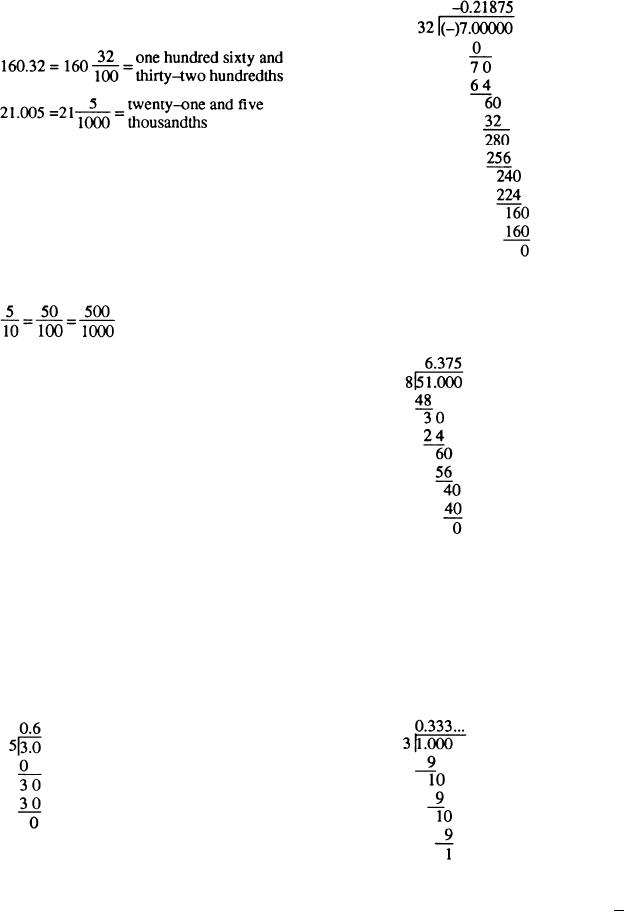
The following are examples of mixed decimals, their
equivalent mixed numbers, and how they are read:
A decimal is any number written with a decimal
point, which includes decimal fractions and mixed
decimals. For the rest of the manual, we will refer to
decimal fractions and mixed decimals as decimals.
Equivalent Decimals
Therefore, -7/32 = -0.21875.
From our study of fractions, it should be clear that
Example: Convert 51/8 to a decimal.
Solution:
Writing the same values as decimals would be
equivalent to
0.5 = 0.50 = 0.500
In other words, the value of a decimal is not
changed by attaching zeros to the right of any decimal
point after the last digit.
Converting Fractions to Decimals
One way to convert a fraction to a decimal is to
Hence, 51/8 = 6.375.
divide the numerator by the denominator. To obtain our
The answers in the examples just covered were all
answer, we will attach as many zeros after the
considered terminating decimals since each quotient
understood decimal point in the numerator as needed,
terminated or ended. A repeating decimal will have a
since we have determined this will not change the value
repeating pattern and never terminate.
of our numerator.
Example: Convert l/3 to a decimal.
Example: Convert 3/5 to a decimal.
Solution:
Solution:
So the answer is 3/5 = 0.6. Notice that the decimal point
in the quotient was placed directly above the decimal
As you can see, there is a repeating pattern of 3. We
point of the number we are dividing into.
will represent the repeating digits with a bar over the
Example: Convert -7/32 to a decimal
repeating pattern. Therefore, l/3 = 0.3.
Solution:
Example: Convert -25/11 to a decimal.
Solution:
14-3

